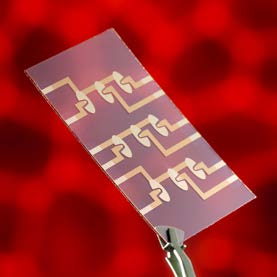New approach in the fight against viruses
Fraunhofer is involved in a project researching a new method for testing the efficacy of vaccines, combining electrochemical sensors with biotechnology. Currently, these tests are typically carried out in the laboratory on cultured cells using expensive and labor-intensive staining methods. First the blood serum of a previously vaccinated person is injected into the cell culture; then the test cells are exposed to a virus load. If the vaccination was successful, the serum contains sufficient neutralizing antibodies against the viruses and infection remains without consequences. This serves as proof of the efficacy of a vaccine. Only then may the vaccine be deployed in physicians’ practices.
The staining method used thus far limits the number of tests that can be carried out. Scientists at the Fraunhofer IBMT and Fraunhofer EMFT together with the companies nanoAnalytics GmbH and innoMe GmbH are working on getting around this restriction. In the new method, the cell cultures are placed on multi-electrode arrays. These allow a state of infection to be detected completely automatically and thus more cost-effectively, using electrochemical measuring methods. Additionally, the cells can also be monitored continuously over a longer period, making information about the development of the cell reaction available over time, which could previously not be mapped.
The research consortium is working on bringing to market a complete system comprising a measuring device, analysis software, and electrode arrays made of printable electrode materials. The German Federal Ministry of Education and Research (BMBF) is funding the ViroSens project under the KMUinnovativ funding guideline to the tune of around €2 million.
Last modified:
